Issue 19(31)
DOI: https://doi.org/10.33098/2078-6670.2025.19.31.406-414 Tymoshenko V. Cause-and-effect relationships between social conflict and crime
Tymoshenko V. Cause-and-effect relationships between social conflict and crime
Purpose: to outline the most important areas in which conflicts most affect the process of social change and threaten the commission of crimes, to trace the interdependence of conflicts and offenses, to formulate proposals aimed at preventing such offenses and their effective resolution. Methodology: dialectical, phenomenological, synthetic approaches; formal-logical, systemic and structural-functional methods. Results. At the moment, one of the most effective means of regulating and resolving conflicts is law. But not everyone resorts to this method. Quite often, they try to resolve the conflict by committing an offense. The causes of conflicts are the inability to realize one’s rights and interests, social inequality, poverty, wars, corruption, loss of cultural and moral values, lack of proper law enforcement. The main reason is injustice. Conflict under conditions of social crisis becomes increasingly destructive in its consequences. A form of manifestation of the destructiveness of social conflicts is the growth of mass negative deviation. The latter should be considered as a special form of conflict activity that can lead to crime. An offense can affect the duration, complexity and methods of resolving a social conflict, and the conflict, in turn, can provide favorable conditions for illegal activity. Scientific novelty: a direct causal relationship between social conflicts and offenses has been established. Conflict can lead to offense and vice versa. The practical significance of the study lies in the ability of law enforcement agencies to use the results obtained to form effective strategies for developing modern political and legal instruments for preventing conflicts and illegal behavior.
Key words: social inequality, poverty, war, corruption, injustice, law enforcement, crime.
References
1. Baltadzhy, P. M., Sukhanova, D. S. (2021). Sotsialʹnyy konflikt v konteksti novoyi realʹnosti. [Social conflict in the context of the new reality]. Pivdennoukrayinsʹkyy pravnychyy chasopys, 4, 78-81. (in Ukrainian). DOI https://doi.org/10.32850/sulj.2021.4.13
2. Fiedler, Ch. (2023). What Do We Know About How Armed Conflict Affects Social Cohesion? A Review of the Empirical Literature. International Studies Review, Vol. 25, Issue 3. (in English) https://doi.org/10.1093/isr/viad030
3. Utari, I. (2019). Collective Violence and Social Disintegration: A Study of Mass Violence as a Trigger off Crime and The Loss of Social Values in Society. The Indonesian Journal of International Clinical Legal Education, Vol. 1, Issue 1, 119-146. (in English) https://doi.org/10.15294/iccle.v1i01.20721
4. Mahendran, R., Xu, R., Li, S., Guo, Y. (2021). Interpersonal violence associated with hot weather. The Lancet Planetary Health, vol. 5, issue 9, 571–572. Retrieved from: https://www.thelancet.com/journals/lanplh/article/PIIS2542-5196(21)00210-2/fulltext (in English)
5. Abhishek, R., Balamurugan, J. (2024). Impact of social factors responsible for Juvenile delinquency – A literature review. J Educ Health Promot. Journal of Education and Health Promotion, Vol. 13, Issue 1, 102. (in English) doi: 10.4103/jehp.jehp_786_23
6. Moore, D. M. (2024). Algorithmic Exploitation in Social Media Human Trafficking and Strategies for Regulation. Laws, Vol. 13(3), 31. (in English) https://doi.org/10.3390/laws13030031
7. Kayaoglu, А. (2022). Do refugees cause crime? World Development, Vol. 154. (in English) https://doi.org/10.1016/j.worlddev.2022.105858
8. Kostenko, M. (2016). Tipy i prichiny konfliktnykh situatsiy pri rassledovanii prestupleniy, sovershayemykh organizovannymi prestupnymi gruppami [Types and causes of conflict situations during the investigation of crimes committed by organized criminal groups]. Legea și viața. Octombrie, 48-52. Retrieved from: http://legeasiviata.in.ua/archive/2016/10-2/12.pdf (in Russian)
9. Popov, G., Puhach, A., Shkolnikov, V., Baranovska, T., Orobets, K. (2025). Assessing War Crimes During Armed Conflicts: Insights from Ukraine and Global Standards. The Journal of Lifestyle & SDGs Review, Vol. 5, Issue 1. (in English) https://doi.org/10.47172/2965-730X.SDGsReview.v5.n01.pe03391
10. Shmarova, N. V. (2020). Psykholohichni osoblyvosti vplyvu ekonomichnoyi depryvatsiyi na frustrovanistʹ potentsiynykh mihrantiv: faktornyy profilʹ [Psychological features of the impact of economic deprivation on the frustration of potential migrants: a factor profile]. Aktualʹni problemy psykholohiyi: Zbirnyk naukovykh pratsʹ. Zhytomyr: Vyd-vo ZHDU imeni I. Franka. T. 6: Psykholohiya obdarovanosti, 17, 290-302. (in Ukrainian)
11.Tymoshenko, V. I. (2024). Nespravedlyvistʹ i bidnistʹ yak zahroza natsionalʹniy bezpetsi Ukrayiny [Injustice and poverty as a threat to the national security of Ukraine]. Naukovyy visnyk Uzhhorodsʹkoho Natsionalʹnoho Universytetu. Seriya PRAVO, Issue 82: part 1, 135-140. (in Ukrainian) https://doi.org/10.24144/2307-3322.2024.82.1.19
12. Wikström, P. O. H., Treiber, K. (2016). Social Disadvantage and Crime: A Criminological Puzzle. American Behavioral Scientist, Vol. 60, Issue I0, 1232-1259. (in English) DOI: 10.1177/0002764216643134
13. Self, T., Miles, H., Harding, B. (2024). The relationships between youth homelessness and offending: A systematic review of the UK literature. Children and Youth Services Review, Vol. 168. (in English) https://doi.org/10.1016/j.childyouth.2024.108032
14. Kovyanov, K. (2025). SSHA rozpochaly deportatsiyu nelehalʹnykh mihrantiv: pershyy reys vyletiv do Hvatemaly [The US has begun deporting illegal migrants: the first flight departed for Guatemala]. 24 sichnya. Available at: https://weukraine.tv/novyny/ssha-rozpochali-deportatsiju-nelehalnikh-mihrantiv-pershij-rejs-viletiv-do-hvatemali/ (in Ukrainian)
15. Vesco, P., Baliki, G., Brück, T. et al. (2025). The impacts of armed conflict on human development: A review of the literature. World Development. Vol. 187. March. (in English) https://doi.org/10.1016/j.worlddev.2024.106806
16. How did the number of crimes against national security change during the war in Ukraine? January 2024, 25. Available at: https://www.slovoidilo.ua/2024/01/25/infografika/bezpeka/yak-zminyuvalas-kilkist-zlochyniv-proty-naczbezpeky-vijny-ukrayini (in Ukrainian)
17. Loshytskyi, M., Kolotilov, O., Bogdanov, R., Verbytskyi, V., & Cherniienko, A. (2023). War crimes and ensuring Ukraine’s national security through the prism of Russia’s armed aggression. Revista De Gestão E Secretariado, Vol. 14, Issue 10. (in English) https://doi.org/10.7769/gesec.v14i10.2885
18. Thomas, K. J., Baumer, E. P., Loughran, T. A. (2022). Structural predictors of choice: Testing a multilevel rational choice theory of crime. Criminology, Vol. 60, Issue 4, 606–636. (in English)
19. Steenkamp, C. (2017). The Crime-Conflict Nexus and the Civil War in Syria. Stability: International Journal of Security and Development, Vol. 6, Issue 1. (in English) DOI: 10.5334/sta.522



